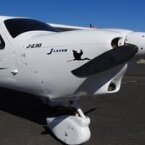-
Posts
3,461 -
Joined
-
Last visited
-
Days Won
47

RFguy replied to danny_galaga's topic in Engines and Props

RFguy replied to skippydiesel's topic in Instruments, Radios and Electronics

RFguy replied to skippydiesel's topic in Instruments, Radios and Electronics

RFguy replied to skippydiesel's topic in Instruments, Radios and Electronics

RFguy replied to Garfly's topic in AUS/NZ General Discussion

RFguy replied to Garfly's topic in AUS/NZ General Discussion

RFguy replied to Garfly's topic in AUS/NZ General Discussion

RFguy replied to Garfly's topic in AUS/NZ General Discussion

RFguy replied to trailer's topic in Aircraft Incidents and Accidents

RFguy replied to danny_galaga's topic in Engines and Props

